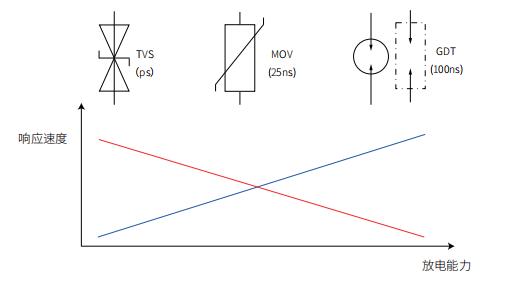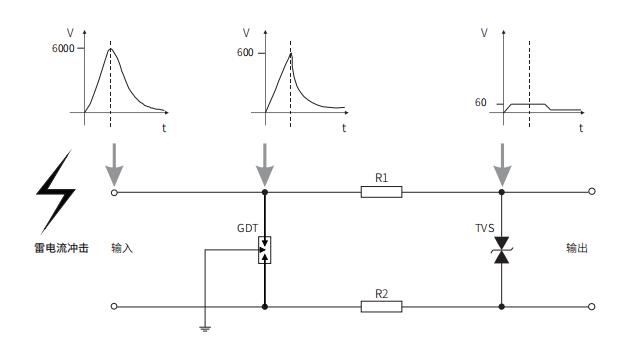Surge protective device (SPD for short), also known as surge protector, lightning protection grid, lightning surge protector, lightning arrester, etc., is the device for limiting transient overvoltage and shunting surge currents. The SPD discharges the surge current containing high energy into the ground, thus playing a protective role. It is applied to lightning protection of various power supplies and signal circuits, and transient overvoltage protection (switching surge, electrostatic discharge, etc.) and other power-consuming occasions.
According to the application, there are mainly power SPD(ac power surge protection device and dc power surge protector), signal SPD (signal surge protection device), field instrument SPD, network SPD (network surge protection device), etc. Power supply SPD is used to protect various power supply and distribution systems, electrical equipment such as inverters, UPS, switching power supplies, etc.
Signal SPD is used to protect various control systems, instruments, PLC, DCS, SCADA, transmitters, flow meters, etc.
The SPD contains at least one nonlinear element inside. It can instantly discharge the lightning current of μs level (10-6 seconds) to the earth within nanoseconds (10-9 seconds).
Commonly used components are gas discharge tube (GDT), varistor (MOV) and TVS (transient suppression diode).
Gas discharge tube (GDT)
The structure of GDT is to fill inert gas, such as argon or neon, inside the ceramic shell (with metal electrodes at both ends). When the external voltage (two poles) increases to such an extent that the electric field between the two poles exceeds the dielectric strength of the gas, gap breakdown occurs between the two poles. GDT is a switching element with a strong discharge capacity of several hundred KA, but has a slow response (about 100ns). GDT is easy to generate freewheeling when it is discharged, and it is in a low-resistance state. Under power frequency voltage, the arc is not easy to be extinguished.
Metal oxide varistor (MOV)
MOV is a metal oxide semiconductor whose main component is zinc oxide. When the voltage acting on both ends is lower than its rated voltage, it is in a high-resistance state, and when the voltage at both ends is higher than its rated voltage, the resistance will decrease rapidly, which is similar to a short circuit. MOV has a strong discharge capacity and has a good non-linear characteristic, which is widely used in power SPD. The response speed is faster than GDT (about 25ns). The discharge capacity reaches hundreds of A to tens of kA. However, there is a μA level leakage current in MOV, and the leakage current will increase after aging, which will lead to a gradual increase in its temperature and cause a fire. Therefore, MOVs used for power SPDs must be equipped with thermal protection measures, such as mechanical tripping devices.
Transient voltage suppressors (TVS)
There are two types of TVS, unipolar and bipolar. The discharge capacity is relatively small, but the response speed is fast (ps level), which can effectively limit the overvoltage. The discharge capacity is around tens to hundreds of A.
Schematic diagram of the performance comparison of commonly used components:

When there is a lightning current in the power grid, the SPD can be turned on within ns, to instantly discharge the lightning current to the ground, and limit the voltage within a certain level, thereby protecting the electrical equipment from being damaged.
Schematic diagram of the working principle of the power supply SPD:

When a lightning current appears in the signal loop, the transient voltage suppressor (TVS) with the fastest response is first turned on, and then the GDT is also turned on, and the lightning current is discharged into the ground. They are matched by coupling elements (resistors or inductors) to avoid TVS exceeding the limit. For example: when a lightning current of 6KV/3KA is applied to the signal SPD, the voltage is limited to about 600V after passing through the GDT. After going through the TVS clamps, the output voltage is limited to about 60V. In this way, the protected electronic equipment only needs to withstand a lower transient overvoltage to avoid damage. The port surge resistance of ports of general instruments and meters can reach 1kV, and that of power port can reach 2kV.
Schematic diagram of the working principle of the signal SPD:
